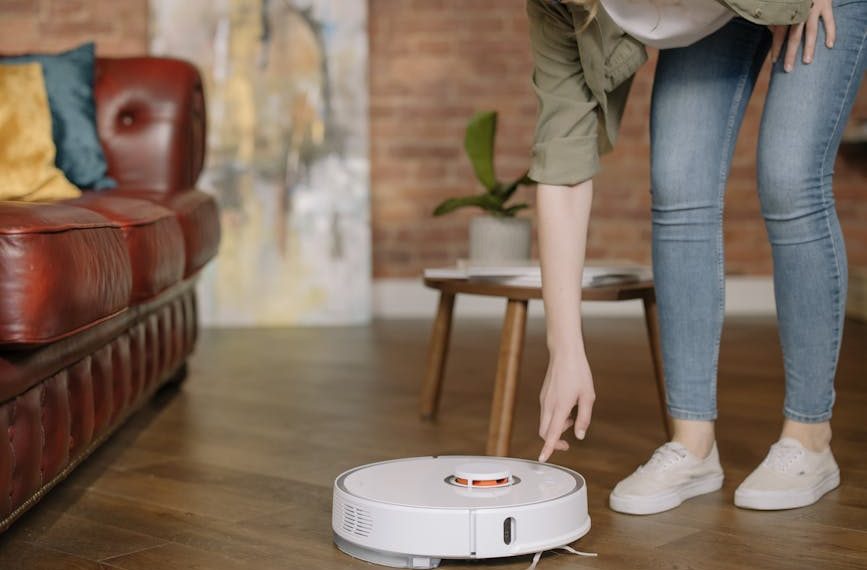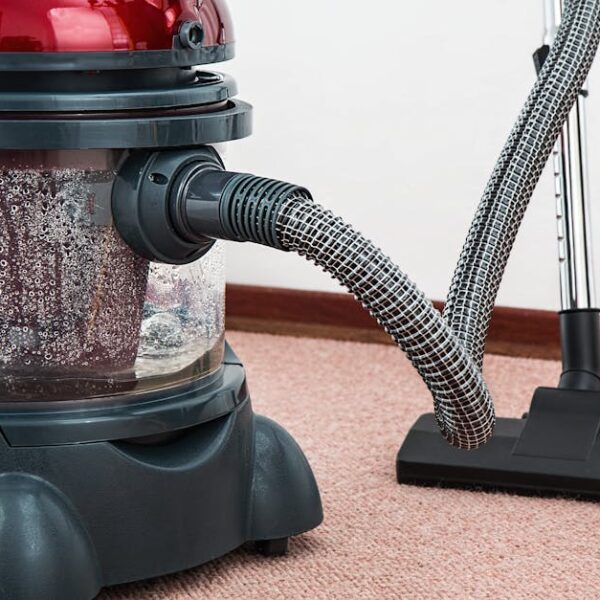Accessing the language of home appliances is not as daunting as one may think. If your Hoover Quest 1000 is beeping, it doesn’t imply a call to tech support or a replacement vacuum – it’s actually the vacuum’s way of communicating specific issues. By understanding what these beeping sounds represent, you can troubleshoot your vacuum cleaner effectively and ensure its longevity. This article is your go-to guide for interpreting your vacuum cleaner’s beeps and resolving the issues they signal.
Unravel the Beep Codes Mystery
Your Hoover Quest 1000 doesn’t beep at random; each beep has a specific meaning associated with it. Become your vacuum cleaner’s interpreter—tune your ears to its speech to promptly rectify whisperings of issues before they become major problems.
Below are the common beep codes and their meanings:
- *Single Beep:* The vacuum has encountered an obstacle or is lifting/tilting.
- *Double Beep:* The side brush is trapped, or the main center brush needs cleaning.
- *Triple Beep:* Bumper is stuck or vacuum is trapped.
- *Four Beeps:* Cliff sensor is dirty, or vacuum is off the ground.
Regular Troubleshooting: Your First Response to Beep Codes
Before diving into individual beep codes, it’s prudent to execute some general housekeeping measures. These include ensuring your vacuum is adequately powered. An exhausted battery might force your vacuum into a schizophrenic beep frenzy.
A simple checklist for regular troubleshooting should include:
- Verify the vacuum is switched on and fully charged.
- Make sure the disposal bin is not full.
- Verify the lenses are clean and unblocked.
Decoding Battery-Related Beep Codes
An array of beep codes might be plea for some attention to your vacuum’s battery. Persistent beep cycles could indicate a low-battery scenario, or even a defunct battery. In such scenarios, try charging your device for a couple of hours. If the beeping persists, it might be time to replace the battery.
A few precautionary measures that can help you avoid battery-related beeping include:
- A regular charging routine, like overnight charging.
- Don’t interrupt the charging process.
- Don’t leave the vacuum in high-temperature environments, it can impact battery health.
Blockage & Maintenance: Unblocking the Beep Codes
Your Hoover Quest 1000 could be having a little cough due to some foreign particle stuck in its operational parts. Blockages are a common cause of the double beep code. Regular cleaning to ensure the brushes or filters aren’t blocked can help keep your vacuum voiceless.
Here are a few cleaning steps to help unblock your vacuum:
- Detach the center brush and side brushes to clear out any debris.
- Clean up the bin chamber.
- Clean up the sensors with a dry cloth.
Understanding your Hoover’s beeping language will help you troubleshoot minor issues and maintain your vacuum cleaner at its optimal performance. When the first beep sounds, consider it as a starting point to an engaging do-it-yourself rescue operation of your Hoover Quest 1000. Following these straightforward checkpoints and standard maintenance practices will ensure that your cleaning partner remains healthy, efficient, and silent.
Navigating Sensor-Related Beeps: Don’t Let Dust Speak Louder
Your Hoover Quest 1000’s ingenious sensors detect edges, drops and obstacles, making it a smart cleaning wonder. But if these sensors get dirty or malfunction, you might start hearing beeps indicating sensor-related issues. A four-beep code relates to an issue with the cliff sensor, usually a signal it’s dirty. Maintaining clean sensors is an essential practice to ensure that the beeping language of your Hoover stays silent.
A step-by-step guide on cleaning the sensors and verifying their operation is as follows:
- Wipe the surface of the sensors gently with a soft dry microfiber cloth.
- Utilize a compressed air can to eliminate stubborn dust particles which aren’t visible.
- Visually inspect the sensors to ensure they are free of blockages and not damaged.
Pro Tip:
Routine cleaning of the sensors will help avoid sudden sensor-related issues. Make it a habit to clean the vacuum’s sensors after every few uses or if beeping persists post cleaning other parts.
Comparison: Best Practices Clean-Up
When it comes to cleaning your Hoover Quest 1000, the method you choose can affect both the longevity of your vacuum and its efficiency in doing its job. Here’s a comparison table pointing out the pros and cons of different cleaning methods:
| Method | Pros | Cons |
|---|---|---|
| Dry Cleaning with a cloth or a brush | Preserves the parts, does not require disassembly of device. | May not remove all dirt or debris. |
| Use of compressed air | Removes stubborn particles, ideal for sensor cleaning. | Can blow particles deeper into device if not used carefully. |
| Wet Cleaning with a damp cloth | Thoroughly removes surface-pasted dirt. | Can damage electronic parts if not dried properly. |
Navigating the beeping codes of your Hoover Quest 1000 is not a daunting task. The beeps are merely your device’s way of landing your attention on a possible problem area. By following these simple troubleshooting steps, you can maintain your vacuum, prolong its life, and improve the efficiency of your cleaning routine. It is always in the simple habits of care and attention to detail, that you find the key to a long-term relationship with your home appliances.
Key Takeaway:
- Hoover Quest 1000 uses different beep codes to signal particular issues; understanding these allows for effective and straightforward troubleshooting.
- General troubleshooting steps include ensuring the vacuum is on and fully charged, and checking for blockages.
- Beep codes could indicate battery-related issues or blockages within the vacuum.
- Regular cleaning and maintenance of the vacuum, particularly its sensors, can prevent many common problems.
- Various cleaning methods have different advantages and potential downfalls; choosing the right approach can affect vacuum longevity and efficiency.
Understanding why your Hoover Quest 1000 is beeping helps transform potential challenges into opportunities for learning and maintenance. As you hone your vacuum troubleshooting skills, rest assured that not only will your living space stay clean, but you’ll also be mastering the art of maintaining home appliances. Embrace these beeps as conversations from your device and unlock a newfound proficiency in handling and caring for your Hoover Quest 1000!
How Do Shark Robot Error Codes Compare to Hoover Quest 1000 Beeping Issues?
When troubleshooting cleaning robots, understanding their error codes is essential. Shark robot error code solutions often require specific resets or component inspections, while Hoover Quest 1000 beeping issues may indicate a need for battery replacement or filter cleaning. Comparing these methods can enhance your experience and efficiency in maintaining your devices.
FAQs
Q: What’s the best way to clean the sensors on my Hoover Quest 1000?
A: Use a soft, dry cloth to gently wipe the surfaces of the sensors. For stubborn particles not easily visible, a can of compressed air can help remove them.
Q: What do I do if my Hoover Quest 1000 is beeping continuously?
A: The beeps are signaling a particular issue. Refer to the common beep codes and their meanings to identify the problem. If the beeping persists, consider contacting customer service.
Q: My Hoover Quest 1000 is beeping even after a full charge. What might be the problem?
A: The beeping could be due to reasons beyond battery issues, such as blockages or sensor problems. Cross-reference the beep pattern with the beep code list to identify the issue.
Q: Can I use a damp cloth to clean my Hoover Quest 1000?
A: Wet cleaning can effectively remove surface-pasted dirt, but be careful not to damage any electronic parts. Always thoroughly dry the vacuum after cleaning with a damp cloth.
Q: Is it important to clean the Hoover Quest 1000 after every use?
A: Regular cleaning increases the efficiency and longevity of your vacuum cleaner. It’s advisable to clean your Hoover Quest 1000 after every few uses, depending on the amount of dirt and debris accumulated.
Enjoy dealing with your Hoover Quest 1000 beeping and don’t forget to explore other related articles on our website. Share this guide if it helped solve your beeping problems and made your cleaning regimen a delight!












